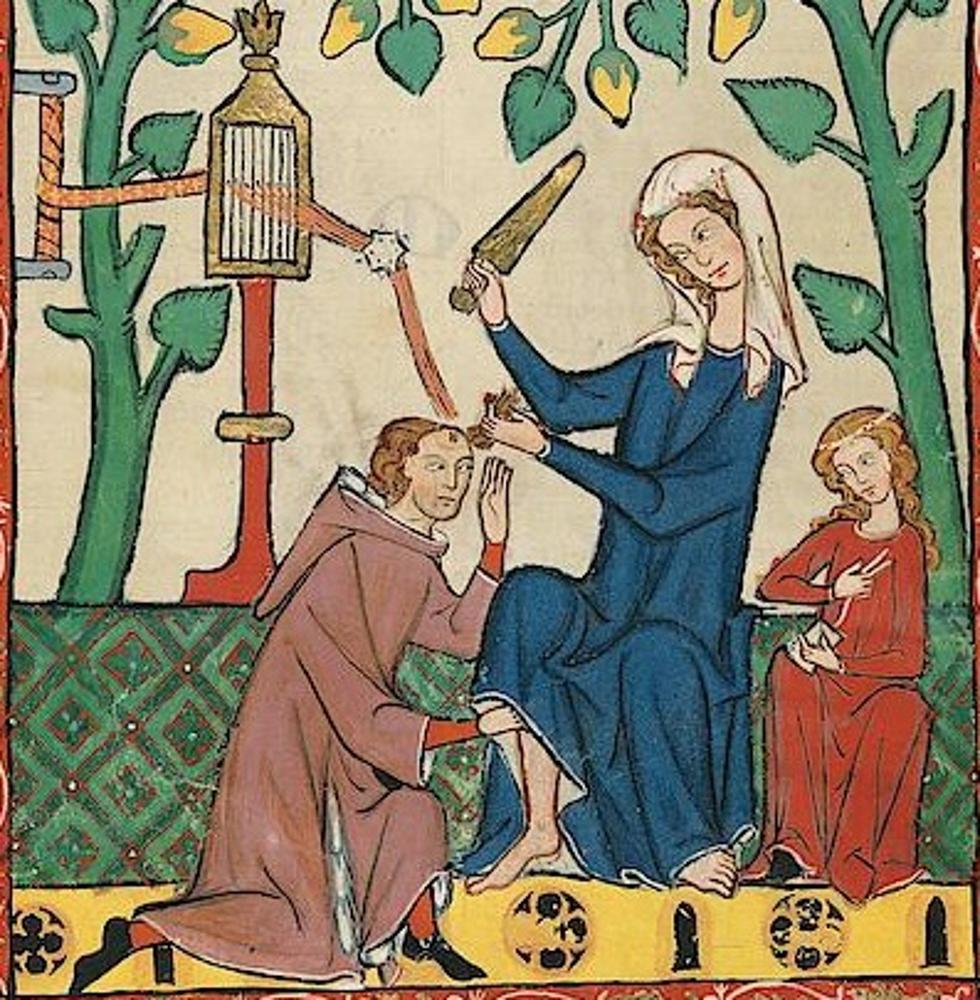More looms
Free standing rigid heddle.
The two sets of warp threads go through the holes and slits respectively. Lift the warp up to select on set, and down to select the other.
This illustration dates from from 1300 - 1340, is from a library in Switzerland and was made in Germany. (Codex Manisse)
And here is the only actual photo I've been able to find of a real one... (It's American, but I'm sure they would have been used elsewhere.)

The blurb says:
Label
Tape looms were used by weavers, men or women, who held the looms between their knees as they worked. The looms produced strips of fabric called tapes roughly an inch wide, that could be ornamental or plain, and were used for everything from garters to binding. Like the carved box nearby, the tape loom is part of a group of carved seventeenth-century objects that is thought to be the product of two joiners who worked in Ipswich, Massachusetts, in the second half of the seventeenth century, William Searle (1611-1667) and Thomas Dennis (1638-1706). Dennis probably trained with Searle in Ottery St. Mary, Devonshire, England, before the two immigrated to New England.
32 1/2 x 9 3/4 x 9 1/4 (HxWxD) (inches)

no subject
no subject
also, before modern looms came along, you could make a strip of tablet weaving as part of your loom set up on a warp weighted loom, and get a decorative edge woven in, in a way that would strengthen the entire fabric.
See https://www.youtube.com/watch?v=9X3xtoK7cHA&t=1299s and look around 21 minutes in. It's a fascinating process.
no subject
The real one is rather beautiful.
no subject
I assume there is some story in which she weaves his hair?
Or maybe, it's just being cut before shaving his head as a monk?
So, it could be symbolic of his devotion to Mary leading him to become a monk?
The knife looks very like a weaving 'sword' which is used to batten down the weft and is made of wood.
no subject